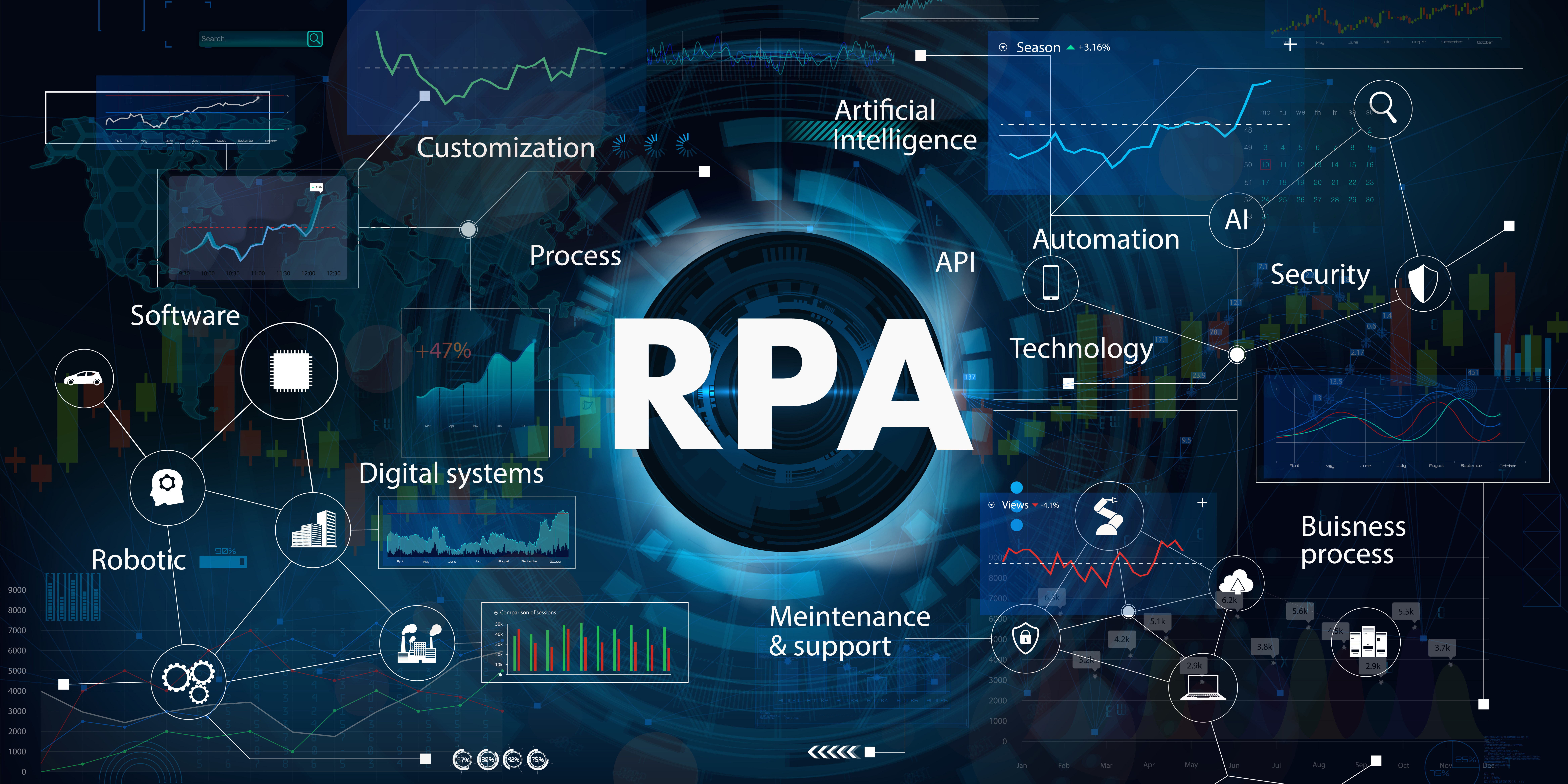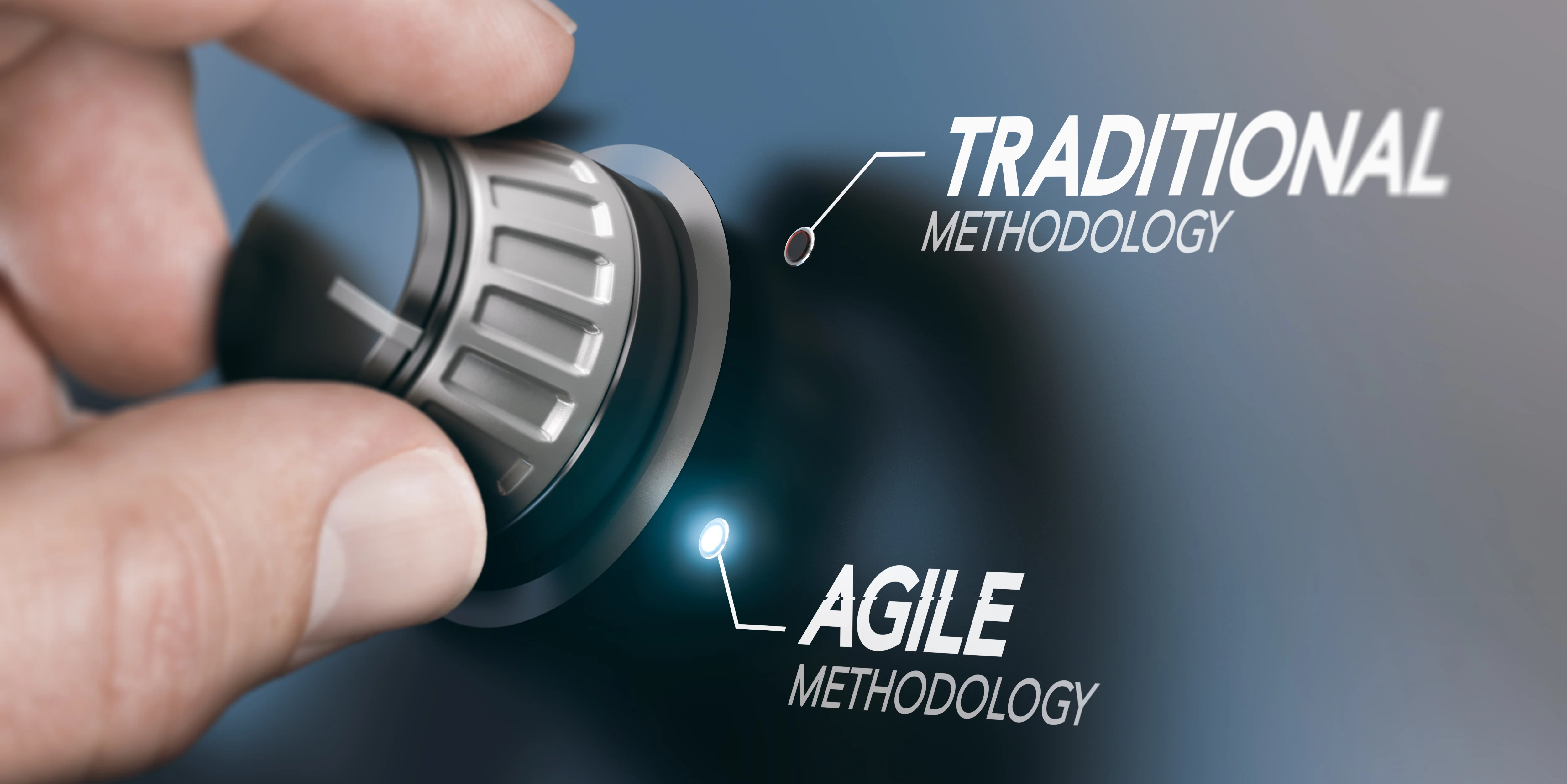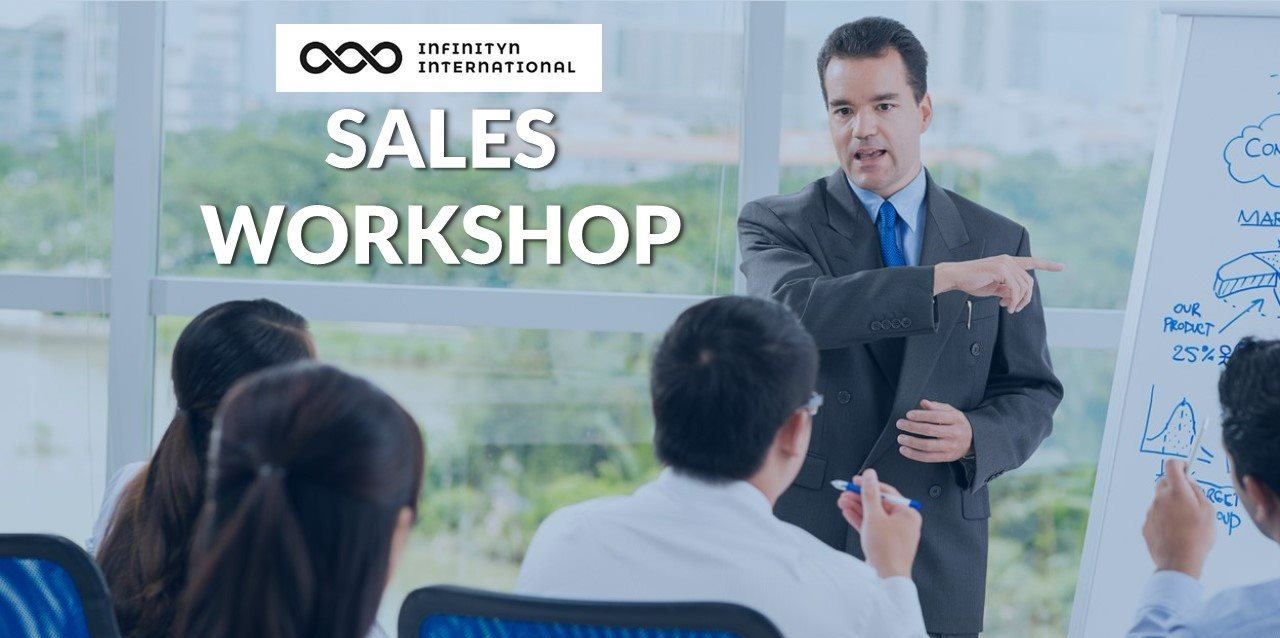Navigating the Changing Business Landscape with Technology and Human Connection
Evolving the SDR Role The business landscape is in constant flux, and with it, the role of the Sales Development Representative (SDR) must evolve. As...
One of the most important functions within a productive outbound machine is Sales Development, the process of filling your pipeline with qualified prospects to be nurtured and converted into buyers.
![]()
There are several components that you need to examine when you’re:
Productive outreach sets the stage to:
Having one successful outbound campaign will lead to the profitable outcome of the next. At Infinityn International, we generally work with high-value software solutions, target prospects in the Enterprise Market and engage globally. We’ve written this guide to the most essential elements of an outbound campaign to help you maximize the impact of your engagements.
We’re speaking from the perspective of this initial stage of outreach when new business opportunities are discovered, qualified, and ushered into the pipeline. Sales campaigns vary greatly depending on the scope of engagement, the lifecycle of the product, and the lifetime value of a customer. Larger deals, with multiple stakeholders & decision-makers, require a Consultative Selling approach as opposed to a Transactional Selling approach, which is faster and with fewer decision-makers. As such, please keep in mind that we’re sharing our experience purely within the Enterprise B2B market.
For products that command a high price, the prospective buyers are a suite of decision-making stakeholders in large organizations. Selling to enterprises requires a significant volume of interaction, engagement, and communication. An effective sales organization will split up the responsibilities of outreach so some members will focus on prospecting (opening a new business) and others on closing. The ultimate goal of sales development outreach is to generate a healthy pipeline of new opportunities for the closers to convert.
Why is it important to specialize in sales roles throughout your organization?
Modern B2B enterprise sales organizations rely on mobile, remote Sales Development teams to execute effective outbound campaigns. This is the bedrock of their success and growth. A Sales Development team is responsible for identifying, connecting with, and qualifying prospective new buyers around the world for products that require multiple engagements and touchpoints.
A successful outbound campaign depends upon the specialization of sales roles, with different salespeople focused on specific & specialized roles: a segment of the sales team dedicated to opening and nurturing new business opportunities, another segment dedicated to converting them from prospects to buyers and another dedicated to the continued success of the customer. This division of labor—with a team dedicated solely to the process of initial outreach—is the most important dimension of an effective outbound campaign.
Sales Development and the specialization of sales roles were first adopted by companies within the B2B technology & software world during the 1980s. Fast-growing enterprises like Oracle Corporation—founded in 1977—discovered that they needed to specialize roles & duties within their sales force to efficiently manage long sales cycles and effectively sell products that required a high degree of trust between the vendor and the buyer.
Accordingly, this higher degree of trust necessitates a greater volume of communication, too much for a single team or salesperson to manage over the course of an entire sales cycle. Therefore, Oracle decided that one segment of the sales force would focus on opening new business opportunities and others would concentrate their efforts on closing those opportunities. This model would soon be adopted throughout the technology sector.
Oracle implemented this original concept of Sales Development during the 1980s, under the leadership of Anneke Seley. She was Employee #12 at Oracle and built their first Inside Sales organization, a telephone-based sales team that reached out to potential buyers through cold-calling to remotely identify promising new opportunities as well as conduct transactions. As Salesforce.com’s official blog describes her, “In 1985, she created OracleDirect, Oracle’s global inside sales organization, and was its first leader. This pioneering virtual selling team was the fastest-growing revenue-generating engine in the company despite a very skeptical and sometimes hostile field sales team.”
Compared to an Outside/Field Sales Model, with salespeople going into the field to physically interact with prospective new buyers, utilizing an Inside Sales team to nurture prospects through the sales funnel turned out to be a perfect fit for Oracle’s growth during the 1980s, since they didn’t have the resources to commit permanently on a global level and couldn’t front the cost of sending salespeople out into the field simply to generate new leads to be followed up on at a later time. Therefore, having a mobile, telephone-based sales team to develop new business opportunities with enterprise customers over the phone was perfect for an upstart software company like Oracle which had just started to embark upon a journey of aggressive global expansion during the mid-1980s.
At the time, within the sales world, Inside Sales had traditionally been responsible for selling lower-value products within a company’s overall offering inventory, with singular transactions taking place over the phone. Since less expensive products require fewer interactions before purchase, they can be completed over the course of a single conversation. However, Oracle was selling higher-value products/solutions with price tags in the hundreds of thousands of dollars, which required multiple conversations, when dealing with enterprises and other major accounts. At the time, Inside Sales was considered a supporting role within an organization, whose job was either to purely focus on lower-value transactions or to support the outside/field sales team. Seley’s idea was to utilize an Inside Sales team to perform a Sales Development function for higher-value products & solutions to nurture prospective new buyers through the various stages of the buying process.
Utilizing this new method of generating, qualifying, and closing new business opportunities, Seley built Oracle’s Inside Sales organization from the ground up. During her tenure from 1980 to 1990, she took Oracle from, “0-$15M in the U.S and 0-$10M outside the U.S”, as stated by herself in her LinkedIn profile.
Nowadays, of course, Oracle is a perennial Fortune 500 company worth billions of dollars, the Inside Sales Model dominates amongst B2B enterprises, and the Sales Development function has become an essential element for companies that sell high-value products or solutions, particularly within the technology industry.
Over the years, Sales Development would be adopted and innovated by other businesses looking to rapidly expand their global reach utilizing a telephone-based Inside Sales team. IBM, for example, introduced the BANT qualification framework, which standardized the characteristics of a B2B buyer who had the necessary budget, authority/decision-making power, a reason/need for buying the solution, and a timeline for implementation. During the 2000s, Aaron Ross famously built Salesforce.com a $100 million revenue-generating machine with a Sales Development team that relied less on pure cold calling and more on the new communication tools like email that were underutilized at the time, a modification to the classic model that he dubbed “Cold Calling 2.0”. His version codified the traditional Sales Development Model utilized today by virtually all start-ups and many enterprise sales organizations.
As he notes in his famous text Predictable Revenue, Aaron Ross was allowed the freedom to experiment with building this Sales Development function by Marc Benioff, CEO of Salesforce.com who recognized the value in implementing this system.
Before he founded Salesforce—a powerhouse software company that (like Oracle) once held the title of “fastest growing software company in the world”—Marc Benioff got his start during the 1980s working for Oracle Corporation in a Customer Support role, where he worked close to the Inside Sales team that Anneke Seley had developed. For a time, Benioff reported directly to Seley, where he observed the powerful impact that a telephone-based sales team could have on the overall revenue of a high-growth sales organization.

Through our leadership’s decades of experience within the world of software sales, Infinityn International acutely understands that a mobile, remote telephone-based sales team has become one of the most powerful tools that a sales organization can deploy. Reach out to us to chat more about the essential elements of building a mobile SDR team to execute successful outreach campaigns or continue reading as we expand upon the foundations of outbound.
What are the components of a successful outbound campaign for an SDR team?
Since the 1980s, Sales Development has evolved into an essential building block of a high-functioning, high-growth sales organization. SDR Teams identify the ideal prospects within the target enterprise account to connect with, perform the initial outreach (i.e getting them on the phone), assess which of these engagements are most likely to convert to a closed deal and organize ‘Next Steps’ meetings & appointments with their sales organization’s closers. Once this process has been completed, the prospects can be submitted into the official pipeline of sales-qualified leads. Without a sales development function, the efficiency of converting opportunities would plummet and organizations would have far less visibility into their pipeline.
The impact of an effective SDR team is determined by the success they have in executing outbound campaigns.
For an SDR team to generate a predictable flow of sales-qualified leads, they must:
The overall goal of an SDR team is to engage prospective buyers remotely (over the phone, email, video conferencing, social media, etc), assess their likelihood of moving through the buyers’ journey, facilitate this process by organizing meetings with the closers and preparing them with the necessary information to have productive discussions. As we’ll explain later, Sales Development should be viewed as both science and artform, since it requires an approach that’s both data-driven and full of nuance.
Determine Strategy, Define Targets, & Establish KPIs
The foundation for success is built upon a clear strategy to approach new buyers, identifying the right targets (industry, region, buyer persona), & establishing the KPIs to measure (i.e the number of leads to be converted)
During this stage, there should be a clear understanding of the industry where outreach needs to be conducted. To establish effective outreach, sales developers need a clearly defined buyer persona to engage with. A buyer persona is a semi-fictional representation of what an ideal buyer looks like, which includes job title, the responsibilities of their job, and the common types of pain points that they might encounter in their industry and profession. Usually, this buyer persona will be based upon the previous customers along with a bit of speculation.
Depending on the industry that your product/solution addresses, you should build the target list of accounts to engage during the strategic phase of your campaign. Since your SDR team will operate globally, you ought to build this list with region in mind. This list will help you understand how to staff your SDR team to accommodate for size, language, etc.
Another component of determining a clear strategy for the campaign is establishing the overall goal and the number of sales-qualified leads that you can expect by the end of the campaign. Sales Development is one critical factor in determining a business’s overall Customer Acquisition Cost, which is the amount of resources dedicated to introducing your product/solution to new customers. Keep in mind that the Lifetime Value of a customer should be around 3 times more than the cost of acquiring them (or a ratio of 3:1). When you’re determining how you want to invest in your Sales Development efforts, consider that an LTV/CAC ratio of 1:1 implies that your spending too much on getting new customers, whereas a ratio of 5:1 means that you’re not spending enough and likely missing out on vast opportunities within your target market. Utilizing a sales development team to generate your pipeline of sales-qualified leads will help ensure the sustainability of your business.
Speaking of pipeline, the SDR -> AE handoff should be seamless. When both the opening and closing teams are operating at maximum capacity, there should be synchronization. This means that the closers in the sales organization are staffed to properly accommodate the number of leads that are generated by the SDRs.
Recruit The Right People
One of the aspects where sales development should be considered an art form is in building the team.. Today’s enterprise buyers are unique, and the people who sell to them are unique as well- That being said, the process of hiring the right people to form the engine of your sales development machine can be standardized. Mark Roberge, the Chief Revenue Officer of Hubspot, lists the characteristics that he looks for when making successful sales hires:
Coachability, along with a willingness to operate as part of a team, is an important attribute to have as a sales developer. Often, hires in this area will be relatively new to the sales craft, and under the guidance of the right mentors/coaches will blossom into effective contributors.
Intelligence and having a sense of genuine curiosity are other traits that will mark a sales developer for future success. First off, an SDR needs to think quickly on their feet, be able to quickly gain command of the company’s overall message, and articulate the value proposition of the product, solution, or service. When interacting with prospective buyers, they must be both curious and assertive in understanding their prospects' needs & priorities.
Learning the industry requires a dedicated work ethic, in addition to an intellectual curiosity. This powerful sense of work ethic will also serve an SDR well during the engagement phase, as they juggle hundreds of interactions. A sales developer will need to be able to unearth a prospect’s pain point and then understand the impact that pain has on the prospect’s business. Understanding these points is crucial to have from the outreach stage to nurturing to closing.
As such, in Infinityn’s experience, another important attribute to look for in a potential sales developer is empathy, which is a necessary characteristic to have when having a conversation with a prospect that will help them progress into the next stage of the buying journey.
Onboarding
The successful ramp-up of the SDR and the overall execution of the campaign come down to the effectiveness of their training. During this part, the SDR needs to master the value proposition of the campaign’s product/solution, the overall messaging of the company, and the industry/buyer personas that they’re engaging.
The onboarding process takes some time as an SDR will require these valuable skills & knowledge to be fully productive:
To ensure their success, the SDR should have an armory of resources at their disposal:
If you’re expecting growth, this team will likely add new members to accommodate your expansion. As such, the onboarding process must be systematized to quickly and efficiently get new people performing in your outreach team.
Defining The Process
Once you’ve determined the overall strategy for the campaign, now it’s time to develop a model of outreach that your reps can follow. This includes the methods of outreach, tools to be used, timing/cadence, and a model for how you keep track of outreach stages from Identification -> Connection -> Engagement -> Discovery -> Qualification -> Arranged Next Steps.
In our experience, clearly defining and accordingly keeping track of these different stages is a key facet of effective outbound prospecting. We’ve mainly dealt with high-value software solutions that require multiple touches and engagements over the course of the prospecting journey. To have visibility into our progress, these stages should have clear parameters and should be adopted uniformly throughout your sales development organization.
If you’re in a similar position as us, defining the process of outreach should be treated as a scientific approach. The Outreach Model should be a repeatable method that will make for more accurate tracking of performance, will better accommodate the growth of your internal team as more reps come aboard, and will scale more easily when you want to turn up the volume of your outreach. Having a replicable process for all reps to follow is key.
While the definitions of the stages of outreach should be inflexible, the outreach itself should allow for your SDRs to personalize and make it their own. The channels of communication (telephone, email, social selling) vary, as does the prospect’s level of interaction with each of these channels. At Infinityn International, all engagements eventually culminate with one (or several) phone calls but other sales development organizations may prefer alternative methods, depending on the industry. Both prospects and SDRs operate uniquely, so your model for outreach should accommodate for your reps to personalize the way that they connect with and engage with prospects.
Ultimately, your process should be a baseline for outreach that can be built upon as your market outreach ramps up.
Use The Right Tools
The goal is to develop a process that establishes trust between the vendor and the prospect. Accordingly, communication is key in sales, enterprise or otherwise. Utilizing the right tools is an important step towards achieving this.
Every organization requires a CRM to manage relationships with their customers. With Infinityn International, we integrate into our client’s CRM, since we’re a White-Labelled Service provider. Within the enterprise world, Salesforce is the most popular CRM so it’s been necessary for us to get a good handle on using their product. A CRM is not just helpful for keeping track of your company’s existing relationships, but also for maintaining visibility into your efforts of outreach. Internally, we utilize Hubspot CRM and Hubspot Sales Enterprise to keep track of our outbound prospecting.
Our sales development efforts culminate in a phone call in order to arrange Next Steps, so it’s important for us to have a tool to connect with our prospects. We have a central location--Budapest--but our prospects are all over the Americas, Asia, Europe and the Middle East. In order to reach them, we use a dedicated VOIP like Aircall, which allows us to communicate on a global level.
Arming your SDR Team with the right instruments of outreach will set them up for success.
Execution & Performance Measurement
With the process in place, the target industry/buyer persona/KPIs all clearly defined, it’s time to get started on executing your campaign. Carrying out a successful outbound process is where art and science meet. An outbound campaign must be designed & monitored from a scientific standpoint, in the sense that all efforts must be observable and repeatable. This will be crucial for measuring performance, making adjustments and in facilitating the growth of your outreach team. However, the actions of engagement will require nuance, much like an artform.
SDR’s should have the freedom to personalize their approach and experiment with their outreach tactics. From our experience in this field, we’ve found that our SDRs are more effective when they have the greenlight to customize a baseline process and allow their personalities to shine. After all, sales development is about making human connections and forming positive relationships. The ultimate goal is developing trust in the prospect and nurturing their confidence in the product/solution. Adhering to a strict set of rules can obstruct this.
Of course, you still need to have a keen eye towards measuring performance, with two key points to pay attention to: effort and effectiveness. From a sales development perspective, the metric of paramount importance is the number of meetings/demos/presentations booked with the closing and the likelihood of the prospects proceeding from that stage to the close. In order to achieve the right number, there will have to be quite a lot of initial engagement.
As such, keeping an eye on activity metrics such number of dials made, discovery calls conducted, emails sent, etc will provide critical insight into your team’s effort. Furthermore, as the campaign ramps up, this data will also help determine the most effective avenues of communication and methods of approach.
For a holistic view of performance, however, your team's management should also be paying attention to the qualitative data that they gather: the information they gain from the prospects, the kind of questions that the prospects answered, the topics that spurred meaningful interaction, etc. This information should be documented for 2 reasons:
Refining The Process
Once your SDR team has collected some hard data, both qualitative & quantitative, you need to refine your process in order to optimize the effectiveness of your outreach. In our experience, this analysis-to-refinement process begins in earnest after a month of outbound prospecting. At this point, your team can utilize what they’ve learned while engaging prospects to make adjustments to how they operate the channels of communication, the flow of the sales cadence, and which triggers/pain points to touch upon that will more smoothly usher the prospect along the buying journey.
Conclusion
A fully-stocked pipeline of eager, qualified prospects leads to more revenue and sets the stage for the global expansion of your company. Successful outbound prospecting will lead to a closer relationship with your target industries & markets, will provide your deal-closers with booked appointments to follow up on and
We’ve provided an overview of the essential elements of an outbound campaign here in this guide and stressed the importance of adding a sales development function in order to unearth new business opportunities. The leadership team at Infinityn International learned the nuances of this process through decades of experience within the software/technology world, so feel free to reach out to us if you’d like to discuss best practices in sales development, market outreach or launching outbound campaigns.

Evolving the SDR Role The business landscape is in constant flux, and with it, the role of the Sales Development Representative (SDR) must evolve. As...

X-Factors to look for when Choosing a 3rd Party Vendor Opening the doors to new business is a critical stage of the sales cycle, particularly within...

Growth process outsourcing is BPO for complex sales and marketing processes. Business process outsourcing (BPO) is a familiar term for most in the...

Helping your future customers advance from RPA initiative to great ROI By Kyle Hansen & Yuriy Koshulap

If you’ve clicked on this article, there’s a fair chance you are considering outsourcing your sales, marketing, customer success and overall revenue...

Lead Qualification & Complex Enterprise Sales Will the prospect progress through the sales cycle? That’s the question that every sales organization...

In today's highly competitive business landscape, Sales teams are constantly searching for innovative strategies to secure and nurture high-value...

B2B strategies can be pretty intricate. But anyone who knows B2B knows that the tricky part isn't the strategy itself, but the execution. At least...

Account-based marketing has been all the rage in the B2B world with big promises, new lingo, new buzzwords. We’ve been finding that it isn’t always...

We’re happy to announce that we’ll be hosting a sales workshop at Corvinus University of Budapest and we’re looking forward to seeing you all there. ...
Traditional lead generation methodologies are losing prominence as new approaches revolutionize the world of business process outsourcing (BPO). The...